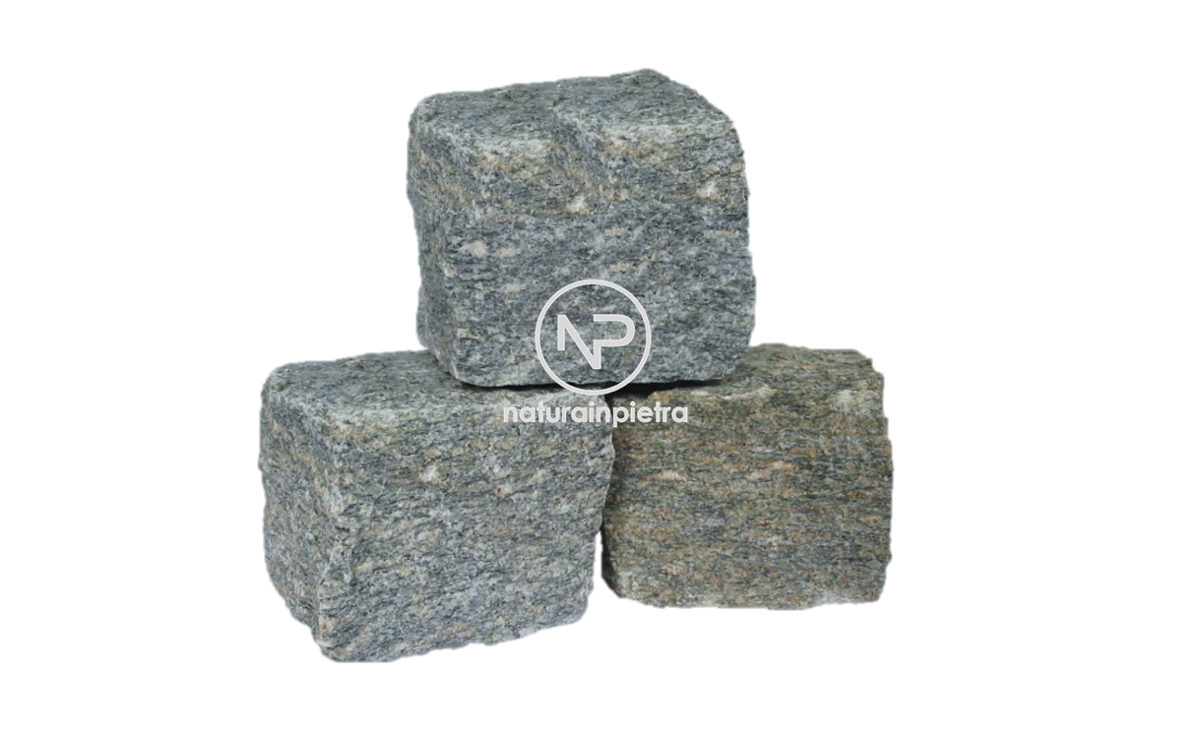
Our Stone
Luserna stone is a natural stone from the Luserna Valley, located in the Maritime Alps in Piedmont, Italy. This stone is renowned for its distinctive features, making it suitable for a variety of uses, both indoors and outdoors.
Characterized by grey tones, often with bluish or greenish hues, Luserna stone is prized for its strength and durability. Its composition varies but often includes slate and talc, giving the stone a compact texture and structure that makes it suitable for many applications.
Luserna stone is commonly used for paving, wall cladding, slabs, steps, and other architectural elements. Its ability to withstand weather conditions and extreme temperatures makes it ideal for outdoor use, such as paving gardens and squares.
In addition to its physical properties, Luserna stone is also valued for its aesthetic appeal. Its natural color and variety of shades make it a popular choice for projects that require a traditional or rustic touch.
It's important to note that there are different varieties of Luserna stone, each with its unique characteristics depending on the specific area where it is quarried.




The History of Luserna Stone
A legacy of pride and prestige.
Luserna stone is primarily quarried in the Luserna Valley, located in the Maritime Alps of Piedmont, Italy. The valley is known for its reserves of this natural stone, and the extraction of the stone has been a significant part of local history.
The history of the ancient techniques for extracting Luserna stone is tied to the hard work of the local people, who developed artisanal methods to extract and work with this precious stone.
In the past, many Luserna stone quarries were open-pit, where workers removed the overburden (locally called "desquatè") to reach the stone deposits below. This practice provided relatively easy access to the stone. Extraction involved the manual cutting of rocks using hand tools like pickaxes, wedges, and hammers to detach blocks of stone from the rock formations.
Once extracted, the stone blocks were transported along mountain paths using pack animals like mules. This method of transport was essential to move the stone from the quarries to nearby communities or processing sites. After transport, the stone blocks were manually worked by local artisans. This process included shaping and finishing the stone for various applications such as paving, wall cladding, and architectural elements.
The ancient techniques of extracting and working Luserna stone have been passed down through generations, contributing to a deep-rooted artisanal tradition in the local history. Today, although many of these techniques have been modernized with the introduction of machinery and advanced technologies, Luserna stone continues to be appreciated for its beauty and versatility in construction and architecture.
The Luserna stone quarries have been, and continue to be, an important economic resource for the region, a source of pride for the people of the Piedmont valleys. This stone has contributed to the construction of numerous local buildings and infrastructures. It has also been used in larger architectural projects outside the Luserna Valley, enhancing its reputation as a high-quality material. In recent years, its economic and commercial importance has grown exponentially, both nationally and internationally.
Key Characteristics:
Luserna stone is a gneiss, a metamorphic rock with a laminated structure.
The stone has overlapping layers, giving it its laminated appearance, with different morphological characteristics that define its appearance and properties.It is predominantly composed of three materials: feldspar, quartz, and mica. The feldspar and quartz make up 60-90% of the stone, while the mica gives Luserna stone its characteristic grey color, which may vary from pale grey to straw yellow or greenish depending on the variety.

Color and Appearance
Structure
Grain
Porosity
Workability
Durability
Common applications
Color Range of Luserna Stone:
Its Qualities...
High Durability
high-traffic areas. .
Unique Appearance
It has a distinctive grey-blue color with natural veins that can add elegance and uniqueness to any space.
Great Versatility
As mentioned earlier, Luserna stone can be matched with a wide variety of design styles, from traditional to modern.
Low Maintenance
With proper sealing and regular cleaning, Luserna stone is easy to maintain and can last for decades.
Physical and Mechanical Properties:
| Apparent Density: | kg/m3 | 2630 |
| Water Absorption: | % | 0,34 |
| Compressive Strength: | MPa | 172 |
| Simple Compression After Frost: | 67 | |
| Flexural Strength: | MPa | 28,3 |
| Resistenza a flessione dopo gelività | MPa | 25,8 |
| Slip Resistance:
Polished Finish: USRV 24 Brushed Finish: USRV 53 Flamed Finish: USRV 88 | USRV USRV USRV | 24 53 88 |
| Tangent Elastic Modulus | MPa | 63845 |
| Secant Elastic Modulus: | MPa | 46470 |
| Impact Resistance: | cm | 81 |
| Absolute Abrasion Coefficient: | mm | 2,41 |
| Relative Abrasion Coefficient: | 80 | |
| Thermal Expansion Coefficient: | mm/m°C | 0,0033 |




